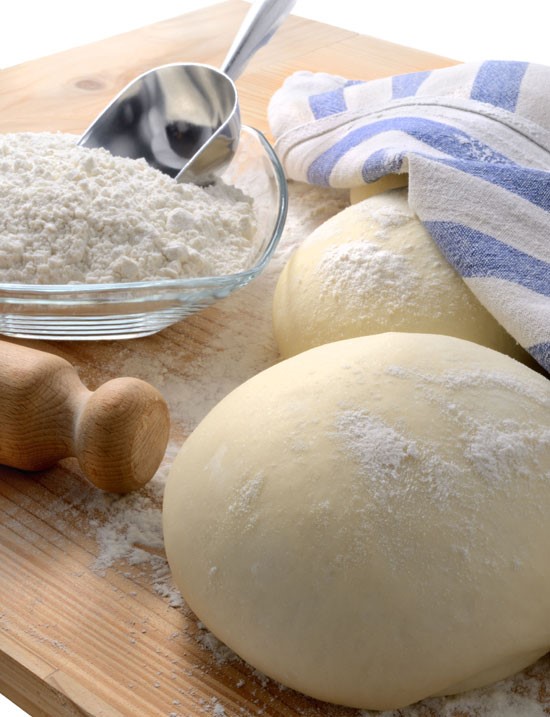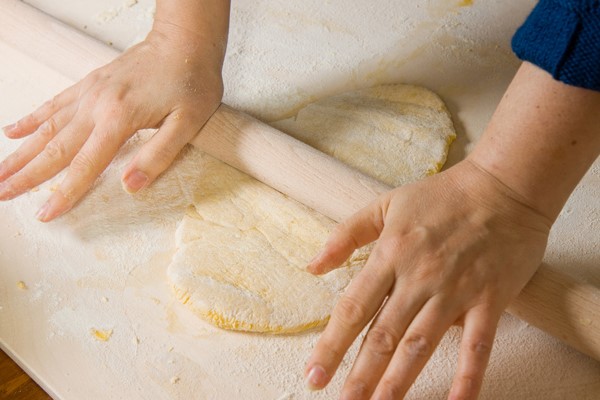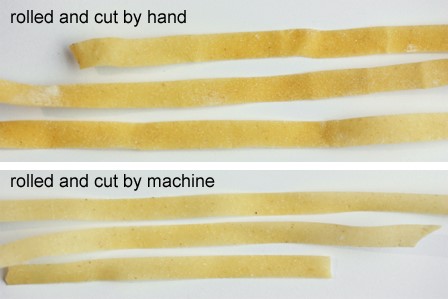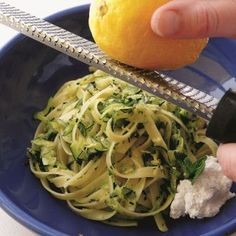Making Pasta Beats the Winter Blues

What's the enduring appeal of pasta? First, it's so affordable. In its most basic form, this economical food is nothing more than flour and eggs, or even just flour and water.
Second, pasta is so versatile. It can be made into countless shapes and goes well with a world of sauces. It easily accommodates all sorts of tastes, from the most die-hard vegetarian to the most unapologetic carnivore. And is there an easier way to please picky children?
But besides these practical reasons, making homemade pasta is a rewarding and fun experience-one that can really beat the winter blues. What's especially nice, homemade pasta doesn't have to be perfect to be inviting or delicious. And that is the beauty of making your own pasta. It looks, feels and tastes homemade.

In a recent article I read in Mother Earth News, I learned that the secret to making good pasta at home is to relax. There's no reason to get all uptight about it. The more you touch and handle the dough, the more familiar you will become with how it should feel (how firm and how smooth it should b, for instance).
The author of the article, Domenica Marchetti, a seasoned and expert pasta maker, explained that most Italian home cooks make basic egg pasta dough using soft wheat flour classified as "00" flour. It is finer than unbleached all-purpose flour and turns out silkier dough that maintains an appealing chewiness when cooked. Domenica says, "One flour can easily substitute for the other, however, and you can make perfectly good pasta using unbleached all-purpose flour, which is cheaper and easier to find. Semolina flour, made from coarsely ground high-protein durum wheat, is used to produce pasta that has a good 'tooth,' but it can be expensive. Just a little added to a recipe will accomplish that toothsomeness."
Most home pasta makers opt for using the shortcut a food processor provides rather than mixing dough the traditional way by mounding flour on the countertop and breaking eggs into a flour "well." The thing to remember when mixing dough for fresh pastas in a food processor,though, is that you should start with the smallest amount of flour listed in the recipe. If the dough is sticky, work in more flour as you knead.

While some folks use a pasta maker for rolling noodles, a rolling pin works just fine for turning out basic noodles. You want to roll out the dough up to one-quarter-inch thick, then cut the dough into strips or squares with a sharp knife. Mother Earth News posted a helpful 4 minute video on You Tube about rolling dough and shaping noodles by hand: How To Make Fresh Pasta Without A Pasta Machine. (<iframe width="560" height="315" src="//www.youtube.com/embed/cQ8TzEbJq8Q" frameborder="0" allowfullscreen></iframe>)
You can hang your noodles to air dry and then store them in air tight containers. Or you can cook it fresh. To cook fresh pasta, bring a large pot of generously salted water to a rolling boil. Add your noodles, which cook quickly. Begin checking for doneness by tasting a piece after just a couple of minutes. The pasta should be tender, but not soft or mushy. Drain the pasta in a colander set in the sink.

Toss cooked noodles with butter and freshly grated Parmigiano-Reggiano cheese, or with a hearty meat ragu - and don't forget vegetables. Author Domenica says one of her favorite ways to dress fresh noodles is with shredded zucchini sautéed briefly with garlic in olive oil, all topped with a little lemon zest and a shower of chopped fresh basil and Parmigiano cheese. I'm drooling-it's easy to see why this would be a favorite way to have her pasta. However you serve it up though, do try making your own; it's such a pleasant way to beat the winter blues.
- www.motherearthnews.com
- www.italianfoodforever.com
- www.bbc.co.uk
- www.pinterest.com
 Alice Osborne
Alice Osborne
Weekly Newsletter Contributor since 2006
Email the author! alice@dvo.com
